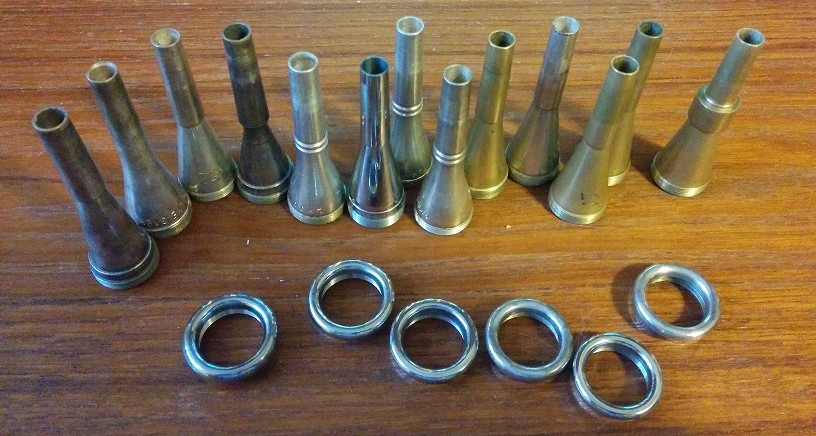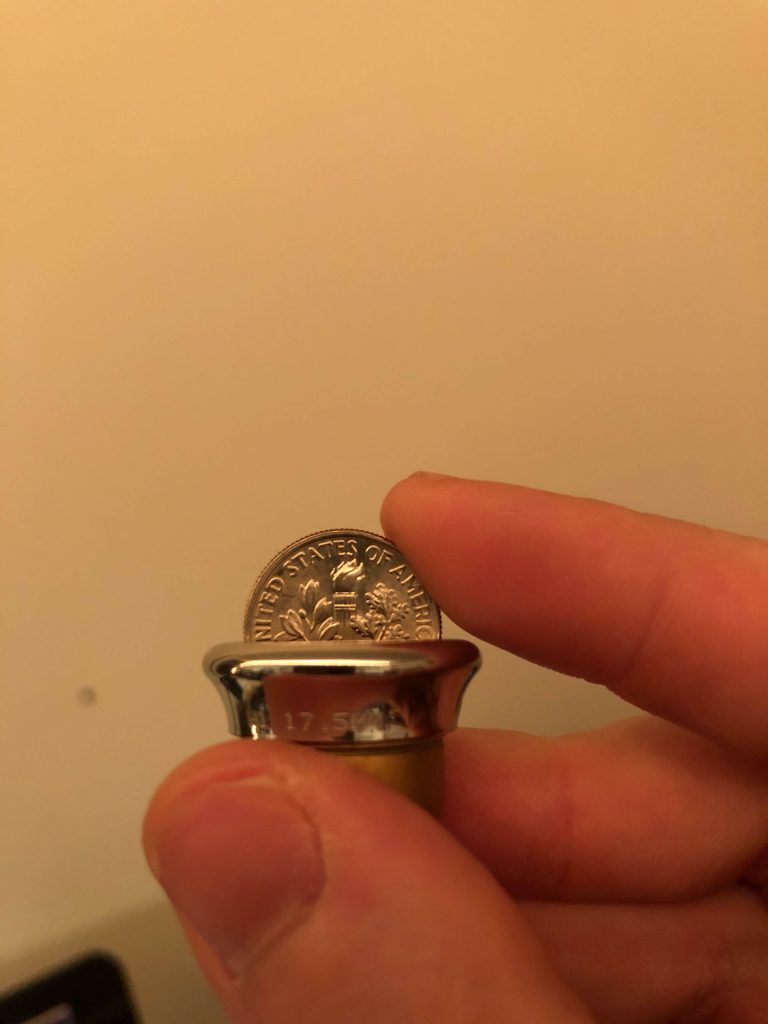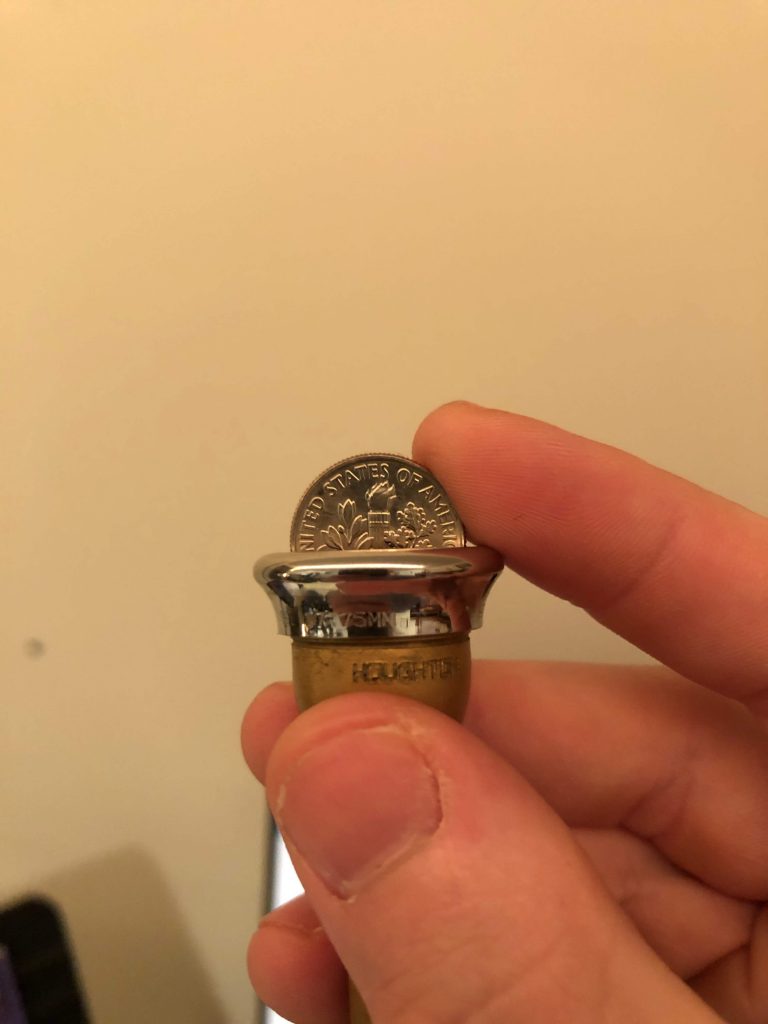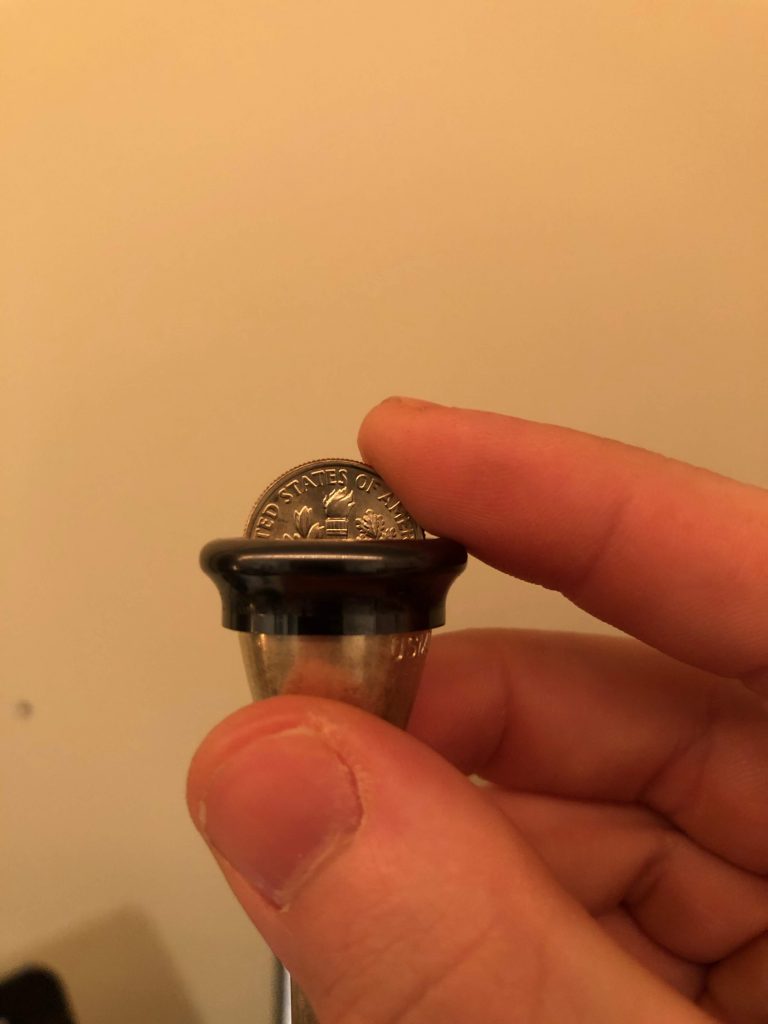Mouthpieces are a topic that is obviously something that I am interested in. I’ve definitely written a lot on the topic of mouthpieces, and I have a pretty good mouthpiece comparison chart and also useful guide on finding a good mouthpiece.
One of the most difficult parts of mouthpiece selection for most people, though is finding a suitable rim.
Rim Importance
The rim is, by far, the most important consideration when finding a comfortable mouthpiece, since this 16-18mm area is the entire connection between your embouchure and the horn.
Measuring Rim Width – The Problem
First things first – when I say rim width, I’m referring specifically to the inner diameter of the rim. The width of the rim itself, while important, is not what I’m concerned about here.
Most makers (these days at least) will give measurements for the rim width, however not all measurements are created equal. The internal face of the rim is curved, of course, and so where the measurement is taken matters, and each maker measures this at a slightly different place.
In the illustration from Lawson below, you can see the difference in diameter between the peak diameter (where the rim is tallest) and the grip diameter (where lips “nestle” into the cup). The measurement for inner diameter is usually taken somewhere within this range.
One useful solution to this measurement issue (that I’ve used before but since forgotten about) was brought to my attention again by John Ericson over at HornMatters.
Measuring Rim Width – The Solution
If you have a few different rims that you want to compare handy, the easiest way to judge their relative diameter is use a small, curved depth gauge with very accurate markings.
And many people can find such an item in their pockets or couches – a dime!
Inserting a dime vertically into the mouthpiece, and noting the position of the letters in the “United States of America” marking, can be a quick and easy (but very accurate) way to find differences in rim diameter.
Some Examples
Here are a few different sized rims that I have put up to the “dime measurement”. You can see that although the differences are small, they are noticeable:
One other thing I find interesting is that the same size rim, from the same maker, can have a different internal diameter depending on it’s threading. This is because (I believe) the joint diameter (where a screw rim joins the cup) is different, which can make the top of the rim a slightly different diameter.
Here are two 18.5mm rims, one PHC threaded, the other standard .660 Giardinelli threaded:
In the end, as you get more particular about your equipment, this dime test can help you zero in on small differences between similar rims. It won’t substitute for a pair of calipers, but it’s a great way to quickly compare two rims.








Leave a Reply
You must be logged in to post a comment.